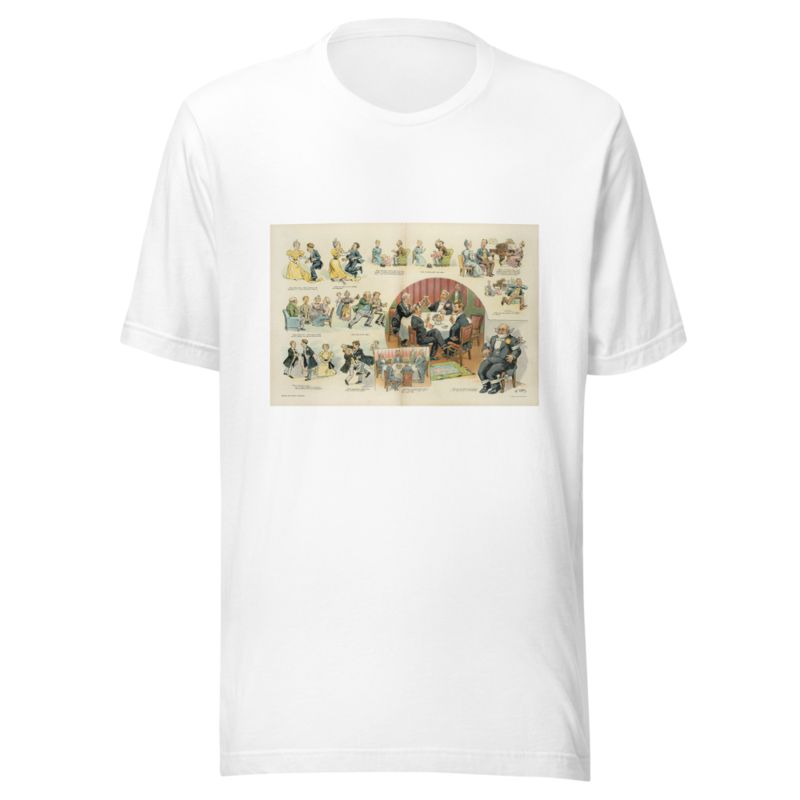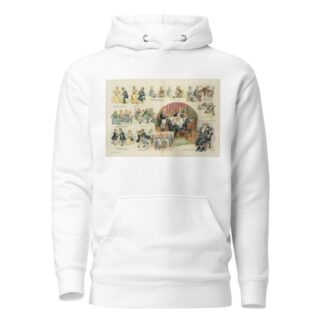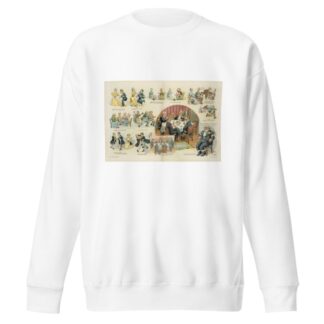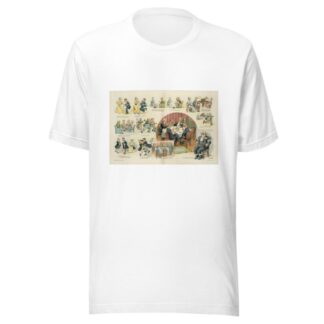Description
Social hypocrisies, and the painful scenes they save us from by Frederick Burr Opper printed on a T-Shirt
About the T-Shirt
Regular fit
Standard length, the fabric easily gives into movement
Casual wear
A classic, everyday option loved by our customers
Side-seamed
Constructed by sewing two parts together, creating a fitted look
The Unisex Staple T-Shirt feels soft and light with just the right amount of stretch. It’s comfortable and flattering for all. We can’t compliment this shirt enough–it’s one of our crowd favorites, and it’s sure to be your next favorite too!
- Solid colors are 100% Airlume combed and ring-spun cotton
- Ash color is 99% combed and ring-spun cotton, 1% polyester
- Heather colors are 52% combed and ring-spun cotton, 48% polyester
- Athletic and Black Heather are 90% combed and ring-spun cotton, 10% polyester
- Heather Prism colors are 99% combed and ring-spun cotton, 1% polyester
- Fabric weight: 4.2 oz./yd.² (142 g/m²)
- Pre-shrunk fabric
- 30 singles
- Side-seamed construction
- Tear-away label
- Shoulder-to-shoulder taping
- Blank product sourced from Nicaragua, Mexico, Honduras, or the US
Frederick Burr Opper (1857-1937)
Frederick Burr Opper is regarded as one of the pioneers of American newspaper comic strips, best known for his comic strip Happy Hooligan. His comic characters were featured in magazine gag cartoons, covers, political cartoons and comic strips for six decades.
Born to Austrian-American immigrants Lewis and Aurelia Burr Oppers in Madison, Ohio, Frederick was the eldest of three children. At the age of 14, he dropped out of school to work as a printer’s apprentice at the local Madison Gazette, and at 16, he moved to New York City where he worked in a store and continued to draw. He studied briefly at Cooper Union, followed by a short stint as pupil and assistant to illustrator Frank Beard.
Opper’s first cartoon was published in Wild Oats in 1876, followed by cartoons and illustrations in Scribner’s Monthly and St. Nicholas Magazine. He worked as illustrator at Frank Leslie’s Weekly from 1877 to 1880. Opper was then hired to draw for Puck by publishers Joseph Keppler and Adolph Schwarzmann. He stayed with Puck for 18 years, drawing everything from spot illustrations to chromolithograph covers.
Opper married Nellie Barnett on May 18, 1881. They had three children, Lawrence, Anna and Sophia.






Reviews
There are no reviews yet.